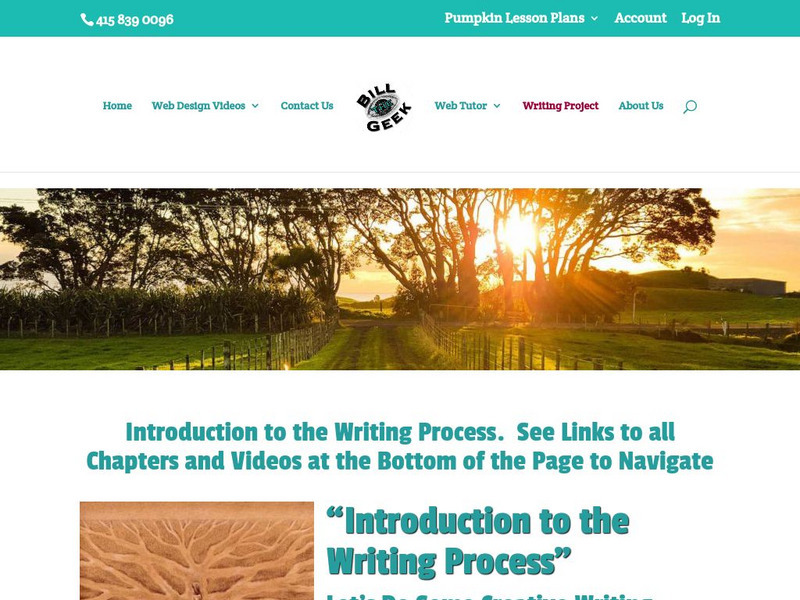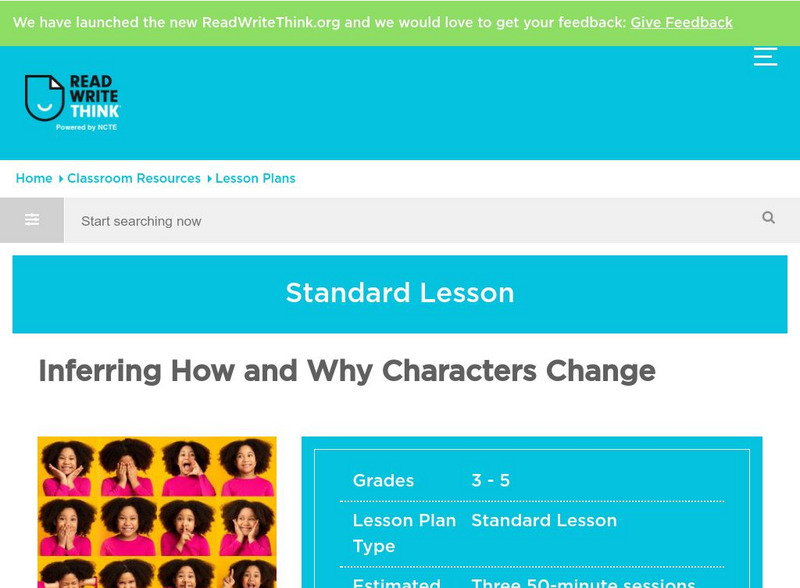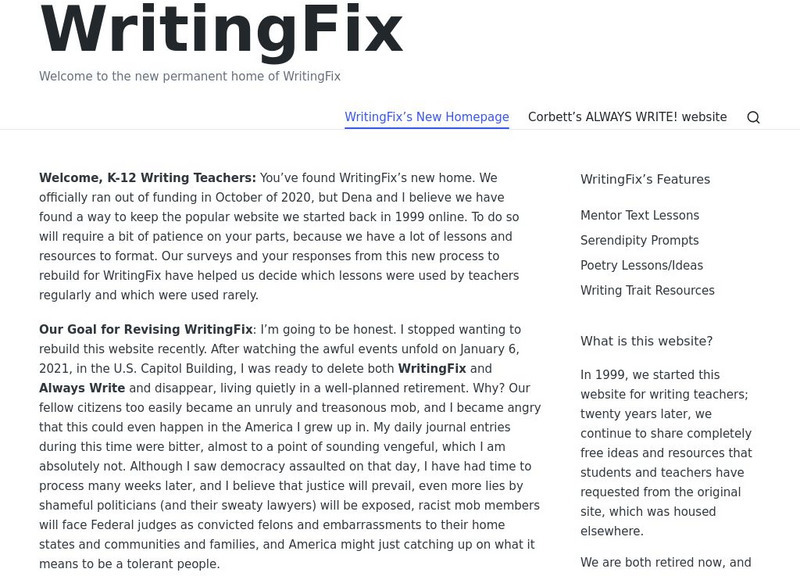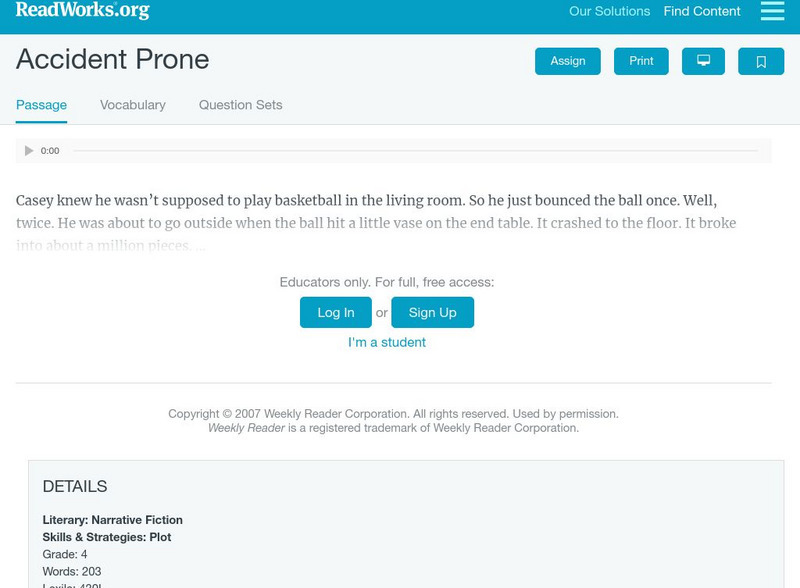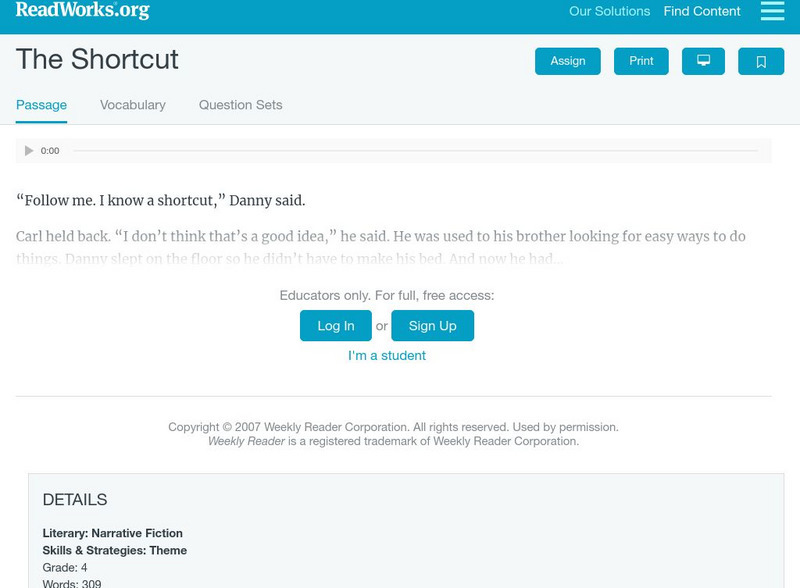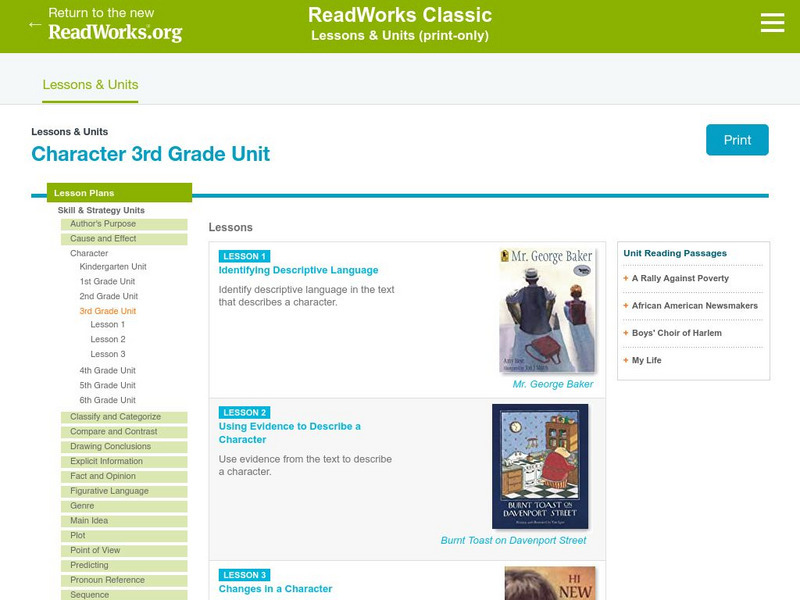Curated OER
Mc Graw Hill: Part 1 Reading: Literature: Retell Events
Retelling a story shows a student's comprehension. Use this site to test your knowledge of how to retell events that happen in a story.
Polk Brothers Foundation Center for Urban Education at DePaul University
De Paul University: Center for Urban Education: I Can Analyze a Story or History [Pdf]
This graphic organizer can be used to help students analyze a story or a historical event. Students will look closely at the story's characters or people involved in the historical event. Then they will summarize the story or event, and...
Other
Writing Is Exciting!
Students and teachers can use this site to find detailed information on effective and creative story writing.
Other
Write a Goofy Story #3
In this activity, students will complete humorous fill-in-the-blank prompts. After students complete each blank, students will view an automatically-generated story that contains their sentences organized in ways that will be funny.
ReadWriteThink
Read Write Think: Book Report Alternative: Examine Story Elements Using Comic Stri
Comic frames are traditionally used to illustrate a story in a short, concise format. In this activity, young scholars use a six-paneled comic strip frame to create a story map, summarizing a book or story that they have read. Each panel...
ReadWriteThink
Read Write Think: Planning Story Characters Using Interactive Trading Cards
Young scholars use trading cards to examine fictional characters in a story.
ReadWriteThink
Read Write Think: Using Picture Books to Teach Plot Development and Confict Res.
Young scholars read picture books to explore the concepts of plot development and conflict resolution. They first learn about the connections between reading and writing, and then revise their own writing. CCSS.ELA-Literacy.CCRA.R.4
ReadWriteThink
Read Write Think: How and Why Characters Change
This lesson plan examines and makes inferences into the change and development in characters. Included in the lesson plan is an overview, practice, objectives, resources, preparation, and more.
ReadWriteThink
Read Write Think: Using Picture Books to Teach Characterization
Contains plans for two or three lessons that ask young scholars to examine characterization in picture books to use as models for their own writing. In addition to objectives and standards, this instructional plan contains links to sites...
ReadWriteThink
Read Write Think: Mapping Characters Across Book Series
This lesson plan examines the changes and developments in characters which appear in a series. Included in the lesson plan is an overview, practice, objectives, resources, preparation, and more.
Quia
Quia: Literary Terms Quiz
In this self-scoring practice activity, students read four passages and select the main idea of each.
Writing Fix
Writing Fix: Story Starters: Intriguing Titles
In this lesson, an interactive link included to help generate ideas for stories. A button is clicked and a topic is given. In a writer's notebook or journal, each student will use the topic given and develop it. [Requires Adobe Reader.]
John F. Kennedy Center
The Kennedy Center: Arts Edge: What a Character!
In this lesson, students analyze how a character's personality traits, actions, and motives influence the plot of a story. Students also learn how storytellers use their face, body, and voice, as well as the five senses, to enhance the...
Writing Fix
Writing Fix: Actions Speak Louder Than Words
After hearing and discussing an excerpt from Sharon Creech's Walk Two Moons, young scholars will plan to create a unique description of a character that uses memorable actions that "show" a person's character. They will brainstorm verbs...
Writing Fix
Writing Fix: A Character's Decalogue
In this lesson, the writer first writes a personal decalogue (a list of ten personal beliefs) about something important to him/her. The writer then creates a decalogue for a fictional character they will invent and envision. The final...
E Reading Worksheets
E Reading Worksheets: Character Types Worksheets and Lessons
This online learning module offers lessons about "characters" and practice exercises about "characters" in stories. These lessons are organized according to the grade levels to which they apply.
E Reading Worksheets
E Reading Worksheets: Story Structure Activities
This learning module provides remediation and extra practice with analyzing story structures. Reinforcement for story structures is provided through the two PowerPoint lessons, three quizzes, and four different worksheets.
Read Works
Read Works: Up in the Air
[Free Registration/Login Required] A literary text about a boy named Kurt and his first trip on an airplane. A question sheet is available to help students build skills in reading comprehension.
Read Works
Read Works: Accident Prone
[Free Registration/Login Required] This story is an example of fiction and assesses students' understanding of plot. This passage is a stand-alone curricular piece that reinforces essential reading skills and strategies and establishes...
Read Works
Read Works: The Shortcut
[Free Registration/Login Required] A literary text about two friends who learn that a short cut isn't always the best choice. A question sheet is available to help students build skills in reading comprehension.
Read Works
Read Works: Character 3rd Grade Unit
[Free Registration/Login Required] In this three-lesson unit, students learn how to identify language within a text that describes a character, use evidence from a text to describe a character, and to use details from a text to identify...
Birmingham Grid for Learning (UK)
Birmingham Grid for Learning: Story Telling: Cinderella
Click through a book to read and view illustrations of the story "Cinderella." Click the links below the book to open word documents with additional activities focusing on the characters, setting, sequencing, illustrations, line...
Annenberg Foundation
Annenberg Learner: Characters
Learn about the different types of characters in Cinderella, and determine which traits belong to the hero and villain. Click on the "Character" button.
Annenberg Foundation
Annenberg Learner: Sequence
Listen to an explanation about the series of events in Cinderella. Then look at some pictures where the story's events are all mixed up and put them in the correct order.
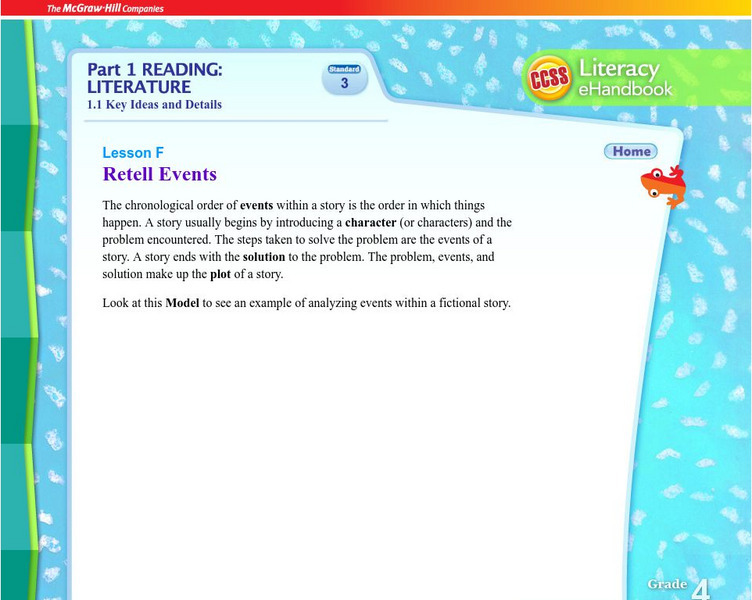
![De Paul University: Center for Urban Education: I Can Analyze a Story or History [Pdf] Graphic De Paul University: Center for Urban Education: I Can Analyze a Story or History [Pdf] Graphic](https://static.lp.lexp.cloud/images/attachment_defaults/resource/large/FPO-knovation.png)
